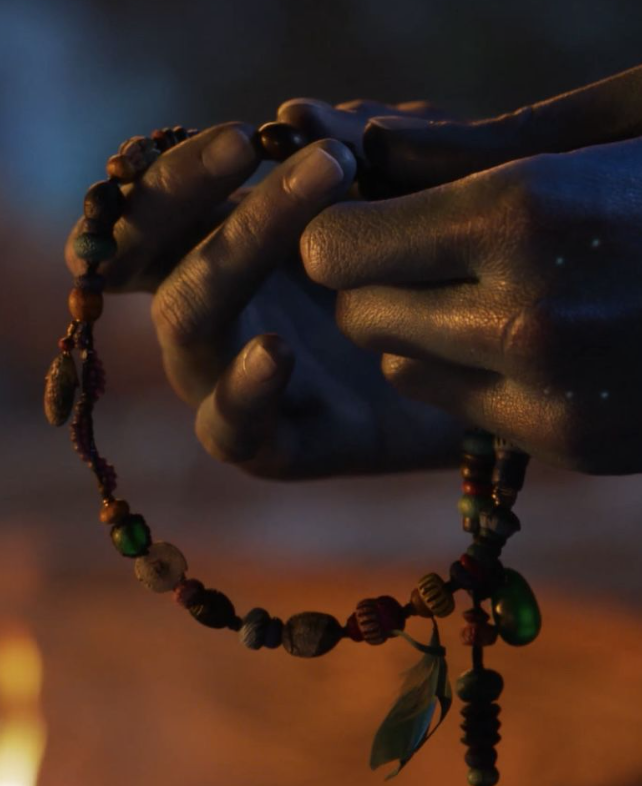
 The Na’vi use mnemonic storytelling aids called waytelem, ‘song cord’, strings of colored beads which, when handled during singing, create a correlation of tactile and visual cues with verbal sequences. Each individual creates a waytelem that is their personal history, and community waytelem are created for various social purposes, including family and clan history, genealogy, and even the recording of astronomical and accounting information.
The Na’vi use mnemonic storytelling aids called waytelem, ‘song cord’, strings of colored beads which, when handled during singing, create a correlation of tactile and visual cues with verbal sequences. Each individual creates a waytelem that is their personal history, and community waytelem are created for various social purposes, including family and clan history, genealogy, and even the recording of astronomical and accounting information.
When an individual has a milestone experience, such as a betrothal, wedding, battle, hunt, or loss of a loved one, they find a new bead for their waytelem to represent that moment in their life’s song. The bead will be made of a natural item, such as a polished or water-smoothed stone, shell, crystal, or piece of bone or plant.
The person’s way, ‘song’, follows ancient forms, including traditional rules for word selection, melody, and rhythm. Only the individual and those closest to them know the significance of each bead.
A way changes throughout life as the person matures. A child’s waytelem is short in length given their young age, but should an individual ask to hear it sung aloud, the song is surprisingly long. Often, the songs are packed with thrilling stories and grand adventures. However, the child’s parents may sing a different version, perhaps closer to the truth. The older a Na’vi gets, the longer their waytelem becomes, as they accumulate important events and moments in their lives. When they die, their waytelem is used by their loved ones to sing their life’s way as a form of mourning and remembrance, before being buried with the individual. The waytelem is the center of identity and storytelling in Na’vi culture.
Here is an excerpt from a mother’s way. It is a lullaby that welcomes her children into the world:
| Lie si oe Neteyamur, Nawma Sa’nokur mìfa oeyä. Atanti ngal molunge, mipa tìreyti, mipa ’itanti. Lawnol a mì te’lan, Lawnol a mì te’lan. - Chorus Ngaru irayo seiyi ayoe Tonìri tìreyä, Ngaru irayo seiyi ayoe Srrìri tìreyä, Ma Eywa, ma Eywa. - Zola’u nìprrte’, ma Kiri. Ngati oel munge soaiane. Lie si oe atanur, Pähem parul, tì’ongokx ahuta. Lawnol a mì te’lan, Lawnol a mì te’lan. |
I experience Neteyam, (And) the Great Mother, within me. You brought light, New life, a new son. Great joy within my heart, Great joy within my heart. - Chorus We thank you For the nights of (our) life We thank you For the days of (our) life O Eywa, O Eywa. - Welcome, Kiri. I bring you to the family. I experience the light, A miracle arrives, an unexpected birth. Great joy within my heart, Great joy within my heart. |